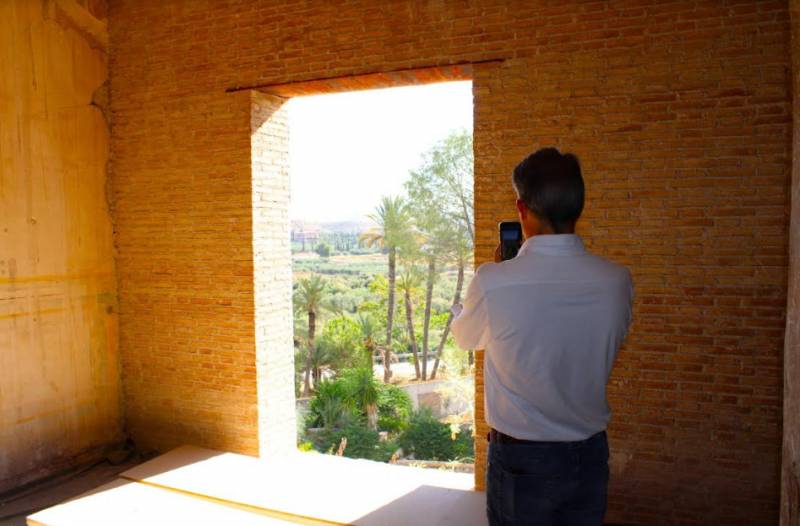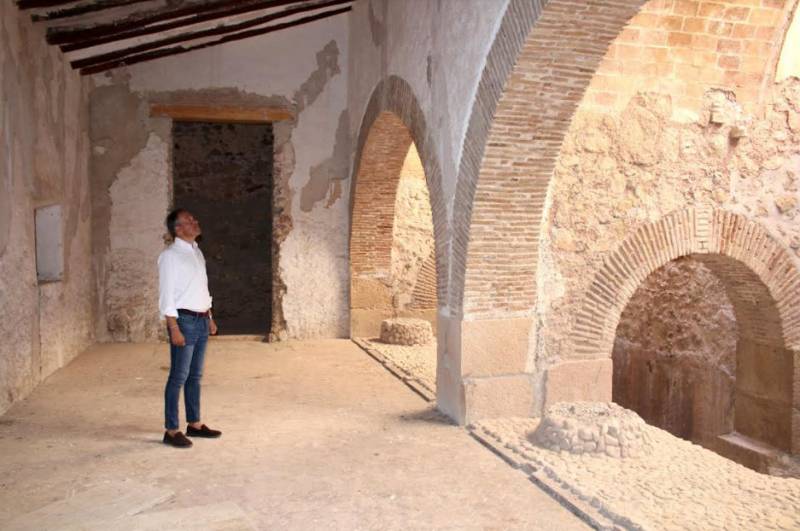-



 Welcome To
Welcome To
 Visit Lorca Castle.Click Here
Visit Lorca Castle.Click Here
To Pre Book
Tours & Activities -



 Welcome To
Welcome To
 The Embroidery Museums.Click Here
The Embroidery Museums.Click Here
To Arrange
Your Visit!












 The historic flour mill known as the Molino del Escarambrujo, approximately a kilometre to the west of the city of Lorca, which was declared an Item of Cultural Interest in 2017 and was acquired by the Town Hall, could be converted into a hotel, according to Mayor Fulgencio Gil Jódar during a visit to the structurally reinforced building this week.
The historic flour mill known as the Molino del Escarambrujo, approximately a kilometre to the west of the city of Lorca, which was declared an Item of Cultural Interest in 2017 and was acquired by the Town Hall, could be converted into a hotel, according to Mayor Fulgencio Gil Jódar during a visit to the structurally reinforced building this week.
The mill suffered serious damage during the earthquakes of May 2011 and during Sr Gil Jodar’s previous term as Mayor, in 2019, there were thoughts that it could be converted into a visitors’ centre themed on the importance and use of water in the Guadalentín valley throughout history. However, on this occasion the Mayor’s first concern was to see for himself the progress in the work to consolidate the structure, and although there is still much to do he was clearly impressed with both the building and the surrounding green countryside.
 For these reasons, and due to the shortage of hotel rooms in Lorca, he believes it could be destined for visitor accommodation and restaurants in the future, with the grounds including important hydraulic infrastructures such as the Acequia de Sutullena, which was created by the Moors in the 13th century and was still in use in 1786.
For these reasons, and due to the shortage of hotel rooms in Lorca, he believes it could be destined for visitor accommodation and restaurants in the future, with the grounds including important hydraulic infrastructures such as the Acequia de Sutullena, which was created by the Moors in the 13th century and was still in use in 1786.
El Escarambrujo includes machinery which was used to ensure that water flowed into a system of containers which kept a flour-grinding mill wheel turning, and documented sources from between 1474 and 1544 state that this was one of around ten mills on the right bank of the River Guadalentín. The others named are those of Sutullena, La Palma, Los Arcos, Escuchagrano, Peña Horadada, Íñico, Gómez Suárez, del Rincón, del Palomar and del Nublo, most of which received water from the Acequia de Alcalá, the oldest in Lorca.
El Escarambrujo belonged to Antonio Robles Vives, the son of a physician in Lorca and brother-in-law of the Conde de Floridablanca, Prime Minister under King Carlos III and the man who was responsible for the construction of the reservoirs of Puentes and Valdeinfierno.

(Prior to the structural reinforcement work)
After the earthquakes of 2011 and a partial collapse of the façade during heavy snow, work has been carried out to ensure the viability of the structure, while some of the original wooden beams have been recovered and Arabic tiles have been re-installed. Apart from the building itself, Sr Gil Jodar stresses, it is equally important to ensure that the gardens are properly restored and cared for.
Images: Ayuntamiento de Lorca
For more local events, news and visiting information go to the home page of Lorca Today.



Hello, and thank you for choosing CamposolToday.com to publicise your organisation’s info or event.
Camposol Today is a website set up by Murcia Today specifically for residents of the urbanisation in Southwest Murcia, providing news and information on what’s happening in the local area, which is the largest English-speaking expat area in the Region of Murcia.
When submitting text to be included on Camposol Today, please abide by the following guidelines so we can upload your article as swiftly as possible:
Send an email to editor@camposoltoday.com or contact@murciatoday.com
Attach the information in a Word Document or Google Doc
Include all relevant points, including:
Who is the organisation running the event?
Where is it happening?
When?
How much does it cost?
Is it necessary to book beforehand, or can people just show up on the day?
…but try not to exceed 300 words
Also attach a photo to illustrate your article, no more than 100kb
